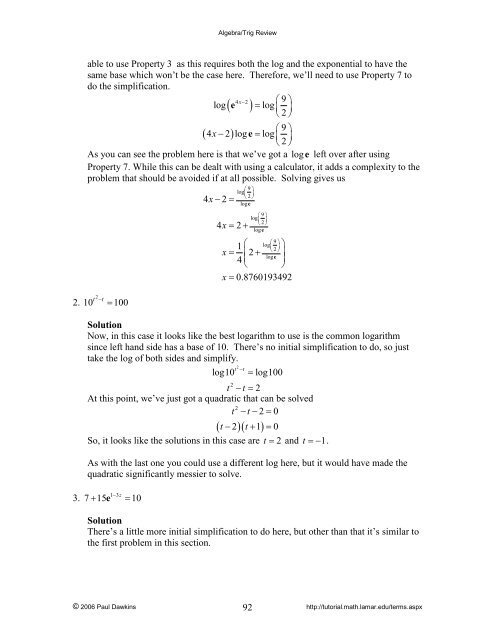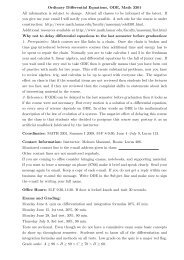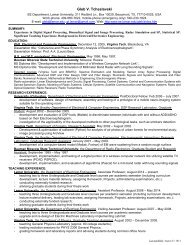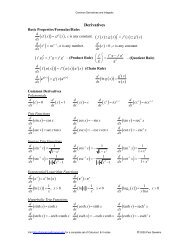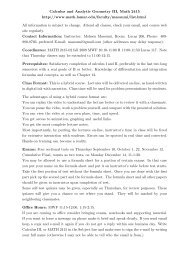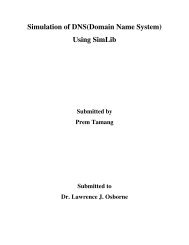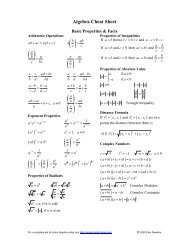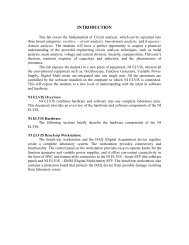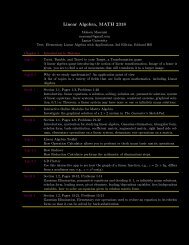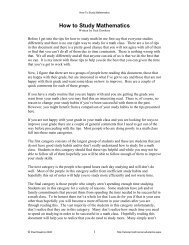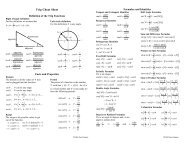Algebra/Trig Review - Pauls Online Math Notes - Lamar University
Algebra/Trig Review - Pauls Online Math Notes - Lamar University
Algebra/Trig Review - Pauls Online Math Notes - Lamar University
You also want an ePaper? Increase the reach of your titles
YUMPU automatically turns print PDFs into web optimized ePapers that Google loves.
<strong>Algebra</strong>/<strong>Trig</strong> <strong>Review</strong>able to use Property 3 as this requires both the log and the exponential to have thesame base which won’t be the case here. Therefore, we’ll need to use Property 7 todo the simplification.4x−2 ⎛9⎞log ( e ) = log ⎜ ⎟⎝ 2 ⎠⎛9⎞( 4x− 2)log e = log ⎜ ⎟⎝ 2 ⎠As you can see the problem here is that we’ve got a log e left over after usingProperty 7. While this can be dealt with using a calculator, it adds a complexity to theproblem that should be avoided if at all possible. Solving gives us2t t2. 10 − = 1004x− 2=⎛9⎞log⎜⎟⎝ 2 ⎠loge4x= 2+⎛9⎞log⎜⎟⎝ 2 ⎠loge⎛9⎞1 ⎛ log⎜⎟x 2 2⎞⎝ ⎠= +log4 ⎜e⎟⎝ ⎠x = 0.8760193492SolutionNow, in this case it looks like the best logarithm to use is the common logarithmsince left hand side has a base of 10. There’s no initial simplification to do, so justtake the log of both sides and simplify.2tlog10− t= log1002t − t = 2At this point, we’ve just got a quadratic that can be solved2t −t− 2=0( t− 2)( t+ 1)= 0So, it looks like the solutions in this case are t = 2 and t = − 1.As with the last one you could use a different log here, but it would have made thequadratic significantly messier to solve.3.1−3z7 15 10+ e =SolutionThere’s a little more initial simplification to do here, but other than that it’s similar tothe first problem in this section.© 2006 Paul Dawkins 92http://tutorial.math.lamar.edu/terms.aspx


